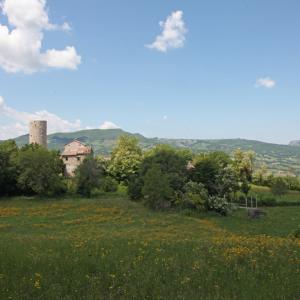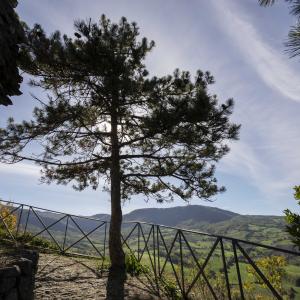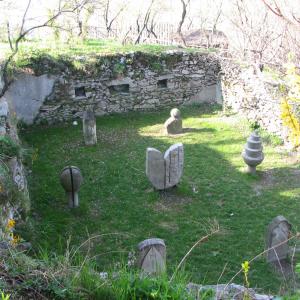Pennabilli - Upper Valmarecchia nature trail
"Childhood of the world" is a path dedicated to Tonino Guerra.
Pennabilli, nestled in the rolling hills of the Marecchia Valley, is a place where art, history and nature intertwine in a unique embrace. This village is an open-air museum that invites visitors to discover corners of extraordinary beauty and charm.
Get your hiking shoes ready and let yourself be transported to a world where every stone tells a story and every corner hides a surprise.
Trail length: 9.5 km
Trail time: approximately 3 hours, on foot.
First stop Tonino Guerra Cultural Association, where the poet's works come to life in a vibrant and creative museum
The journey begins here, among works, drawings and installations that tell the Maestro's poetic vision. A place where art and memory coexist in a magical atmosphere, a living place, home of the cultural association.
Second stop Tonino's rock
Set in the stone of the Roccione is a splendid terrace in the garden of the 'Almond Tree House', where the Maestro lived his last years. Here the panorama embraces Canaiolo, a place that Tonino called 'the childhood of the world'.
You will immediately understand why.
Third stop The Sanctuary of Thoughts
Between the walls of the ancient castle of Penna, this atmospheric, oriental-style garden is home to seven enigmatic stone sculptures, which evoke echoes in the heart, mind and soul of the visitor.
It is a moment of pure introspection. Silence, nature and beauty.
Fourth stop The Angel with a Moustache
An unusual and curious installation in the Church of the Fallen that originates from a poem of the same name dedicated to an angel "who was unable to do anything" and instead of flying to Paradise, went down to the Marecchia River to feed stuffed birds, which one day opened their wings and took flight.
A tender and surreal installation, a poem that takes shape, and perhaps ... even a smile.
Fifth stop Il Canaiolo
Dive into nature in this corner of the Marecchia Valley characterised by crevices created by ancient streams and large boulders, a primitive and evocative landscape with crystal-clear waters that are cool even on the hottest days.
The perfect place for a break and a click to take
Sixth stop The Orchard of Forgotten Fruits
Close the path between rare plants and poetic sculptures. Here, ancient fruits such as biricoccolo and azzeruolo tell stories of distant times and rediscovered flavours.
Between rare plants, sculptures and works of art dedicated to masters such as Fellini and Tarkovsky, this place invites you to rediscover the love of the land and the past.
Tips for true professionals
- Take a photo of the villages of Villa Maindi and Ca’ Fanchi, little gems surrounded by greenery, and the Molino Donati.
- Make a stop at the Sasso Simone and Simoncello Park Nature Museum, with dioramas that will introduce you to the local fauna.
- Comfortable shoes, water bottle and an inquisitive spirit: remember that the perfect journey begins this way.



